If you are a driver who also wears glasses, you’ve probably struggled to decide between which pair of glasses to put on in the car. Either way, you’re hindering your vision one way or the other. By not wearing your eyeglasses, you likely won’t be able to see near or far away depending on your eye condition. But not wearing sunglasses could mean being blinded by the harsh UV rays of the sun. The best option is to get yourself a pair of prescription sunglasses, that way you can achieve optimal vision.
When it comes to prescription sunglasses, there are many varying types to choose from. One of our favorites is the polarized sunglass lens that provides added protection to your eyes in harsh sunlight. Learn more about prescription sunglasses and polarized lenses below.
 The Importance of Protecting Your Eyes with Prescription Sunglasses
The Importance of Protecting Your Eyes with Prescription SunglassesMany patients are unaware of just how damaging UV rays can be on their eyes and do very little to protect them from mild or harsh sunlight. Even if there is cloud coverage in the sky, UV rays can still negatively affect your eyes. UV-A rays typically lead to problems with central vision and the macula which is part of the retina. UV-B rays are also damaging, mostly affecting the cornea and lens. Extended exposure to these harmful rays can lead to more serious eye conditions including:
Though many people are hesitant to spend the money on purchasing a second pair of glasses by buying prescription sunglasses, those who have are sure glad they did. Prescription sunglasses provide much-needed sight assistance even in high-light situations. When you’re driving down the street or taking your dog for a walk and the sun is glaring in your eyes, your regular prescription glasses will do very little to help you see. Likewise, wearing sunglasses with no prescription leaves you with very little vision. Prescription sunglasses, however, block out the sun while providing the same sight assistance as your glasses.
Prescription sunglasses can also help with light sensitivity, glare-related headaches, and regular eye strain from squinting in the sun. And if you’re worried about crow's feet, not squinting all the time from either harsh sunlight or blurry vision can help reduce those lines around your eyes.
First, it is important to note that not all sunglasses are polarized. While all sunglasses are designed to limit UV rays from penetrating through the lenses and limit glare, some are much more effective than others.
To understand how polarized sunglasses work, you need to know how light is reflected. Most sunlight that reaches our eyes is dispersed and scattered due to the fact that it often reflects off of uneven surfaces such as trees and roads. However, when sunlight is reflected from a smooth, shiny surface like the hood of a car, Lake Tahoe or a phone screen, the light is reflected in just one direction. The dispersed light is much less bothersome and damaging, while light that is directly reflecting into your eyes is more troublesome.
Polarized sunglasses are manufactured in a unique way that creates a different pattern within the lens that is able to block out more light than typical prescription sunglasses. A special film is laminated in between the lens surfaces in a vertical pattern. This helps block light and eliminate polarized glare entirely.

There are many advantages to wearing prescription sunglasses, especially with polarized lenses. Polarized lenses provide clearer vision in bright light, increases contrast, offer minimal color distortion, and reduces glare, reflection, and eye strain. And, the polarization is built directly into the lens, leaving a seamless finish for flawless vision. For anyone who spends time outdoors, polarized lenses will provide the best UV protection for your eyes.
When it comes to eye protection, eyeglasses and sunglasses are essential. With prescription sunglasses, you never have to worry about choosing which pair of glasses to put on again.
Visionary Eye Center is your home for custom vision solutions, and we take pride in offering top-tier care for each patient. We want our patients and community to be well informed to make the best health decisions for you and your family. Please don’t hesitate to contact us with any general inquiries or concerns, or schedule an appointment for an eye exam!
Just like with the rest of your body, age can have drastic effects on your eyesight. One of the most common age-related eye conditions out there is cataracts. You may be asking yourself, “what are cataracts?” and you’re not alone. Though many people have heard of cataracts, they’re less informed about the types, symptoms, and treatment of them. Considering how common cataracts are, it’s likely that you or a loved one may be affected by the eye condition if you don’t take the proper precautions. Take a look below to learn all you need to know about cataracts and see what you can do to protect yourself from developing this condition.
 What Are Cataracts?
What Are Cataracts?Cataracts are described as clouding of a normally clear eye lens. They affect the natural lens of your eye which leads to impaired vision and other sight complications. Typically, cataracts affect older patients over the age of 60 and are most noticeable in dim lighting. Fortunately, cataracts do form slowly and can be treated.
Though the cause of cataracts has not yet been fully determined, it’s understood that they form when proteins build up in the lens, making it appear cloudy. The cloudiness prevents light from passing through the lens clearly resulting in vision impairment. There may be several causes of cataracts, but generally, age, exposure to sunlight, and eye trauma are the biggest contributors.
The main symptom of cataracts is the inability to see clearly. Cataracts cause light to be blocked by the natural lens impairing your vision. Other signs and symptoms of cataracts include:
There are several types of cataracts including cortical, posterior subcapsular, and nuclear sclerotic cataracts.
Nuclear sclerotic cataracts are the most common and it’s very typical for people to develop them in their late age. This type of cataract forms in the center of the lens also called the nucleus. You may notice your vision improve for a brief amount of time when developing nuclear sclerotic cataracts but these effects do not last. Over time, your lens will begin to harden and become yellow or brown in color. It makes seeing small details almost impossible, dulls colors, and may result in seeing halos forming around objects.
Cortical cataracts are common in diabetes patients. These cataracts develop opposite from the nucleus, starting at the outer layer of the eye rather than the center. As it progresses, it creates noticeable spokes that lead from the outside in. A unique symptom of this type of cataract is experiencing changes in both contrast and depth perception.
Posterior Subcapsular cataracts develop much quicker than other types of cataracts, typically over months rather than years. Posterior cataracts start at the back of the lens and are most common in diabetes patients or those with extreme nearsightedness. Steroid use can also increase the risk of developing posterior subcapsular cataracts. With posterior subcapsular cataracts, you will first notice changes in your night vision and may also notice more difficulty reading.
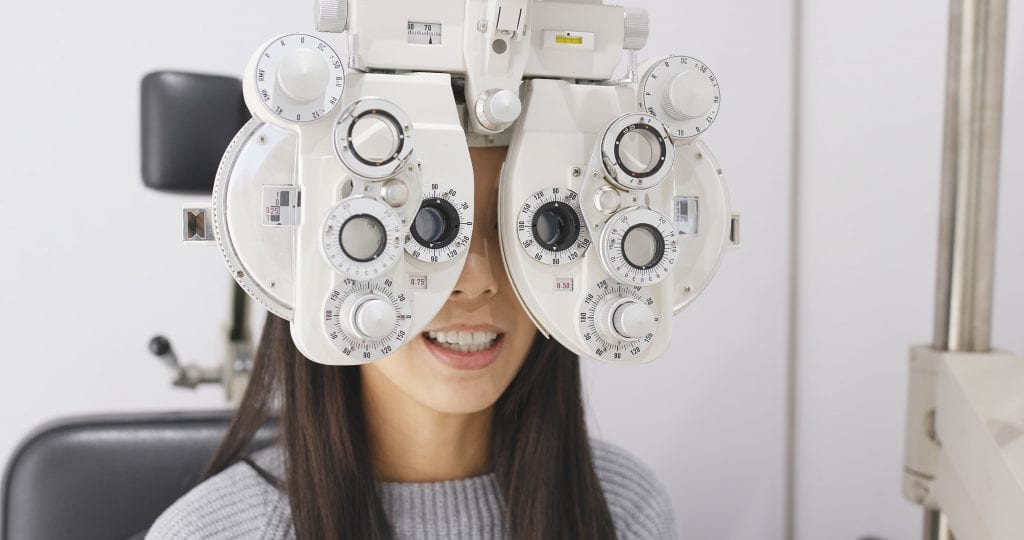
The good news is that cataracts are easily treatable by medical and eye professionals. If you catch the condition early enough, a stronger prescription lens can improve your vision for some time. Typically, increasing your light source will also help vision in patients with cataracts, so be sure to add light to your home and use your new prescription glasses or contact lenses.
If these no longer work for you, then cataract surgery is going to be necessary. Cataract surgery is the only way to remove the cataract and fully treat it. There are several kinds of operations for cataracts, but they all require your surgeon to take out the cloudy lens and replace it with an artificial one. The surgery usually takes about 15 to 20 minutes, and you don't need to stay overnight in a hospital. If you have cataracts in both eyes, your doctor will wait until your first eye heals before they perform surgery on the second. More than 95% of people who have this done say they can see better afterward.
While there is no surefire way to prevent the onset of cataracts, there are some precautions you can take to limit your risk of developing cataracts. With risk factors such as increasing age and previous trauma or injury, there’s little you can do to keep eye problems from worsening. However, other risk factors can affect this as well. Some of them include:
In order to prevent cataracts from forming, try making some life changes such as:
Cataracts are the leading cause of blindness worldwide, though in the United States access to cataract surgery is readily available, so most Americans, fortunately, do not need to live with vision impairment from cataracts for very long. Should your condition require more advanced medical care, we work with many of the area's best specialty surgeons to co-manage any problems you may develop.
If you’re struggling with complications caused by cataracts or are just starting to develop cataracts, contact the Visionary Eye Center today! Here, we strive for customized eye care solutions for our Reno-Sparks patients and are eager to help you gain back control of your vision.
Vision problems can be a huge distraction in your daily life, making even casual tasks such as driving extremely difficult. One common vision problem that patients may experience is night blindness. You may be asking yourself, "what is night blindness?" and you're not alone. Someone with night blindness will have difficulty seeing in dark environments, which is especially noticeable when driving at night. Night blindness can be dangerous in some situations, so it’s critical that you get the help you need to alleviate your symptoms and get your eye health back on track.
For more information about night blindness, read the article below or contact our Reno optometrists today.
 What is night blindness?
What is night blindness?Night blindness, professionally known as nyctalopia, affects your ability to see at night or in poor lighting conditions. Although many people believe night blindness is an eye condition/disease all of its own, this actually isn’t true. Night blindness is the result of an underlying health issue such as cataracts, diabetes, or myopia. It’s also important to note that night blindness does not result in actual blindness but does lead to impaired vision in dark environments.
Night blindness often presents itself when transitioning from a well-lit area to a dark, poorly-lit environment. Our eyes naturally adjust and adapt to changes in light, but those with nyctalopia are typically unable to do this, resulting in poor visibility. If you have difficulty driving at night due to lousy vision or struggle to see in dark restaurants, movie theaters, etc., then you likely suffer from night blindness. However, many types of night blindness are treatable and symptoms often subside once the underlying issue has been resolved.
There are several possible causes of night blindness including:
 Symptoms:
Symptoms:The most common symptom of night blindness is experiencing poor vision in dimly lit or dark environments. However, this isn’t the only symptom that may present itself in those with nyctalopia. Other symptoms include:
Not all forms of night blindness can be treated, but a majority of them can be managed or remedied in some way. The treatment for your night blindness will vary depending on the cause of your condition. For example, if your night blindness is caused by myopia or nearsightedness, then new glasses or contact lens prescription may be recommended to alleviate your symptoms. And if your night blindness is caused by cataracts, surgery may be the only option for relief.
Other night blindness treatments may include a change in glaucoma medication or a visit with a retinal specialist. To determine your best course of action, it’s essential to visit your Reno eye doctor. They’ll be able to diagnose the cause of your night blindness and will provide the best treatment plan based specifically on your needs.
 See how you can prevent night blindness
See how you can prevent night blindnessAlthough some night blindness may be the result of a genetic disposition, other forms of nyctalopia may be prevented with some simple lifestyle changes. Try making these easy changes in your everyday life to help prevent the onset of night blindness:
Here, at the Visionary Eye Center, we strive for customized eye care solutions for all of our patients in the Reno-Sparks area. As each patients’ needs are unique, your treatment plan should be unique to you as well. We’ll work with you to determine the underlying cause of your night blindness to develop a solution that addresses your symptoms and treats your vision problems.
Our office uses the latest diagnostic technology and treatment solutions so you can receive cutting-edge options and not the bulk products that are found in other optometrists’ offices. Contact us today to get started with your personalized eye treatment. We look forward to meeting you!
Children and infants aren’t exempt from experiencing vision problems. Like adults, children can suffer from a variety of eye conditions including amblyopia, strabismus, and refractive errors such as nearsightedness and farsightedness. Genetic diseases such as glaucoma and cataracts may also affect children at a very young age. Thankfully, with regular vision checks, your child’s eyesight difficulties can be detected and treated early on. Start by learning the signs of vision problems in babies and children so you and your pediatrician can refer to an optometrist and rectify the situation before it gets out of control.

Eye exams should be done by your optometrist regularly. Unfortunately, pediatrician screenings aren’t designed to detect the subtle signs of early disease or vision problems. So, just like it is important to have your child see the dentist early, so too is it important to bring your child to an eye care professional at the following ages even if nothing seems wrong:
All children who wear glasses should have their vision checked yearly at their annual checkups. At these appointments, it will be determined how the vision problems are progressing and new glasses or contact lenses will be prescribed if necessary.

Vision problems may appear at any point in a child’s life. Many of the signs of vision problems in babies and children will be easy to spot, but some may go unnoticed if not closely monitored. If you notice any of the following signs or symptoms in your child, be sure to connect with your optometrist to see if further action should be taken:
Some vision problems may have no symptoms at all. Commonly, amblyopia (lazy eye) provides no obvious warning signs, which is why it’s so important to have your child’s eyes checked regularly. Tests can be done to determine if an eye condition is present or developing. Catching these signs early on is critical as it can help prevent your child from suffering chronic vision problems.
If you are concerned about your child’s eye health, or if you’re still wondering what are the warning signs of vision problems in babies and children, don’t hesitate to schedule them an appointment with an optometrist. Here at the Visionary Eye Center, we are equipped to offer pediatric eye care with the best options, treatment, and technology available.
We have developed techniques and technology specifically for children of all ages. When it comes to your child’s eye health, being proactive is essential. Feel free to contact us with any questions or concerns about your child’s vision, and don’t hesitate to schedule an appointment with us today! Visionary Eye Center is your home for custom vision solutions, and we take pride in offering top-tier care for each patient.
Many people will experience a migraine from time to time. In fact, an estimated 1 billion people across the world suffer from migraines. However, the headaches and migraines that are associated with vision or cause vision problems, are rarely typical. If you’re prone to migraines and headaches that cause vision impairment or even vision loss, you may be suffering from an ocular migraine. You may be wondering “what is an ocular migraine?” and you’re not alone. They’re often misunderstood or misdiagnosed as a different type of headache or eye condition which leaves many confused about what issue they are being affected by.
Learn more about what an ocular migraine is below, along with noticeable symptoms, possible treatments, and prevention methods of this eye condition.
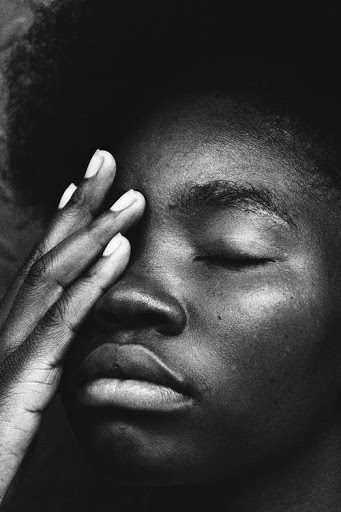 What is an Ocular Migraine?
What is an Ocular Migraine?An ocular migraine is defined as being a rare condition that affects your vision in one eye. This type of migraine is characterized by temporary loss of vision or even blindness in just one eye, not both, and vision typically returns to normal within an hour. These migraines may be painless for some people or may be accompanied by pain from a migraine headache. Though ocular migraines often cause impaired vision in one eye, their effects may differ from patient to patient.
Ocular migraines are often confused with a much more common condition called migraine aura that usually affects both eyes rather than just one. It has been determined that ocular migraines are most likely caused by reduced blood flow or spasms of blood vessels behind the eye. Changes that occur across the nerve cells in the retina may also lead to an ocular migraine.
It’s important to note that regular migraine headaches can cause vision problems such as blind spots and flashes of light, which are not related to an ocular migraine. The biggest difference between the two conditions is that an ocular migraine causes vision loss in just one eye, while a regular migraine results in impaired vision in both eyes. When visiting your Reno optometrist, the doctor will first begin ruling out conditions that present similar symptoms to ocular migraines. These may include:
There are several telling symptoms of an ocular migraine, however, these can sometimes be difficult to determine on your own. Fortunately, a qualified, licensed optometrist can help you better assess your symptoms and provide appropriate care in return. Be sure to observe symptoms such as:
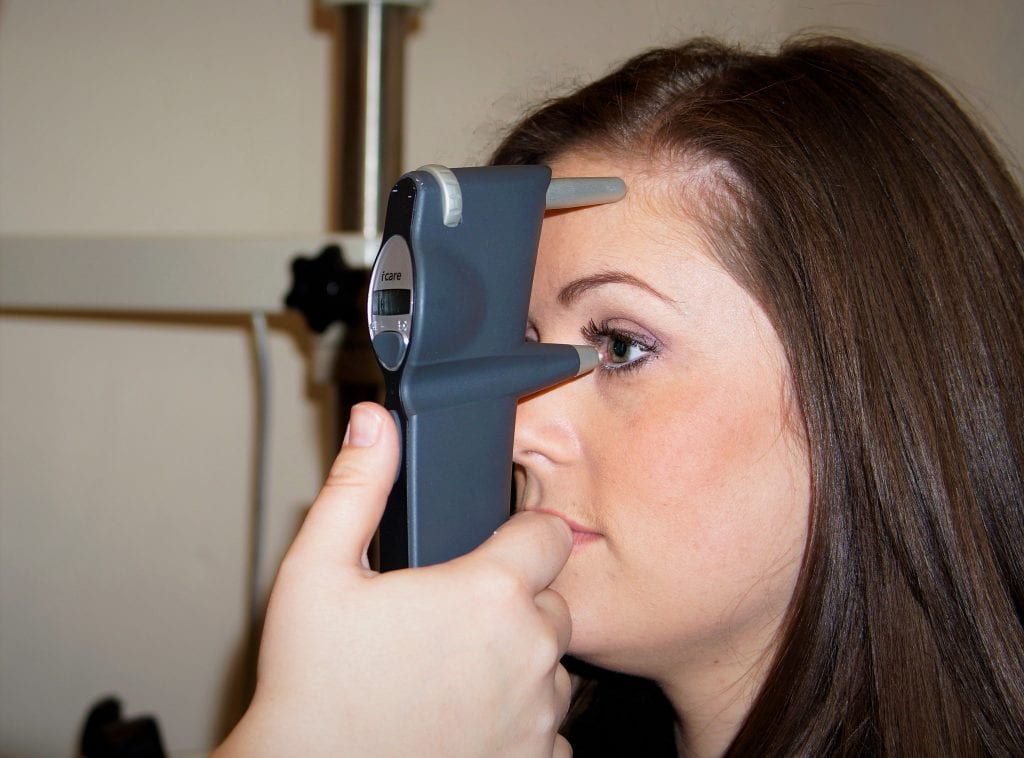
Because of the transience of this condition, treatment is often not necessary during the time of the occurrence. The vision loss that you experience should subside within an hour, but it is important to take a few precautionary measures to prevent further injury or discomfort during an episode. Once you notice the vision loss, you should stop whatever you’re doing and rest your eyes until your vision appears normal. If your vision problems are accompanied by a headache, take an over-the-counter pain reliever to help alleviate the discomfort.
Other methods of treatment may include medications or medical devices that are intended to limit or prevent the ocular migraines from happening altogether. Medications that are commonly prescribed to treat epilepsy have proven to be an effective treatment for ocular migraines. These include valproic acid and topiramate. Other medications that may be effective are CGRP inhibitors, blood pressure medicines (such as beta-blockers), and tricyclic antidepressants.
Fortunately, there are some simple lifestyle changes you can take to prevent an oncoming ocular migraine that have proven to be quite effective. Like traditional migraines, ocular migraines can be triggered by a number of different factors. To prevent a debilitating ocular migraine from occurring, try to avoid the following to the best of your ability:
 Visit Your Reno Optometrist
Visit Your Reno Optometrist Ocular migraines are quite rare, and the symptoms are often caused by other underlying problems. To determine the true source of your complications, be sure to meet with the Reno optometrists at Visionary Eye Center. Their team of dedicated, professional optical specialists will be able to help you with your vision problems and provide effective solutions and care to help you feel better. Connect with the experts at Visionary Eye Center today!
As a child’s health is the number one priority to parents, surprisingly many are inattentive to the importance of eye health. Eyesight issues can impact a child’s life in every fashion of ordinary life from school to sports and socializing. Children cannot always vocalize exactly what’s wrong, and a lot of times it’s hard for them to even realize.
You may be asking yourself, “Does my child really need glasses?” Healthy eyesight is crucial to a child’s well-being, so in this blog we will explore some of the most common signs to tell if your child really needs glasses or not.
Before we get into signs of possible eye issues, the most important thing is to make sure your child goes in for frequent checkups. Oftentimes, kids are only taken in occasionally if there is nothing wrong the first time, but doctors recommend children should be seeing an eye doctor at least once a year.
Many schools perform a regular vision screening, but miss 75% of children with vision problems. The screening performed by your pediatrician using a picture chart tacked to the wall is similarly inadequate. If your child fails a school or pediatrician vision screening make sure to bring them in immediately for a comprehensive eye exam. Eye exams by an optometrist are really the only foolproof way for a true diagnosis, and it often these vision issues will continue to worsen if you don’t stay proactive about the situation.
1) Squinting
Squinting compensates for your eyes’ inability to clearly see an object by reducing misfocused light. If you notice your child has a tendency to squint while looking at far away objects (nearsightedness) or squinting while looking at close up objects (farsightedness), it may be time for a checkup.
2) Tilting of the head
If you see your child continuously tilting their head, especially if you notice they are attempting to strain their vision, it could be an attempt to increase vision clarity by changing their sight angle. This could be a sign that their eyes are misaligned or an imbalance of the eye muscles.
3) Sitting too close
It could seem like a natural child thing to do to sit too close to the TV or hold devices or books close up to their face, but it could be a sign of nearsightedness or myopia development. Nearsightedness affects your vision where one can see more clearly when the object is closer, and it is one of the most common vision problems for children around the world.

4) Struggling in school
If you notice your child is struggling in school or with school work, it could be a number of different things which makes it so much more important to stay informed about your child's performance in school. For a young child, school is very stimulating, and they are forced to adapt quickly, including their eyes. Vision problems can lead to a lack of focus or motivation for school work.
5) Headaches, migraines, nausea or eye pain
If your child is suffering from any of these symptoms it could be a number of different things, so just remember to listen to your children and continue to stay proactive. These symptoms could be a result of strain from the extra effort that your child must put forth if they are experiencing vision problems. This tension may cause frequent headaches or eye pain, or in more severe cases migraines and nausea could be present.
6) Covering one eye
Similar to tilting the head, covering one eye while reading, watching TV or any eye strain, can be an attempt to compensate for double vision. It could also be a sign of sensitivity to bright light (exotropia) or lazy eye (amblyopia).
7) Excessive eye rubbing
Eye rubbing is a pretty natural tendency, but it is important to monitor your child’s habits. If they are rubbing their eyes on a regular basis or during strenuous eye activity like reading or watching TV, it could be a sign of digital eye strain, dry eye or allergic conjunctivitis.
If you are concerned about your child’s eye health, or if you’re still asking yourself, “Does my child really need glasses?” you should immediately schedule them an appointment with an optometrist. Here at the Visionary Eye Center we are equipped to offer pediatric eye care with the best options, treatment and technology.
We have developed techniques and technology specifically designed for children where many other optometrists are not capable of seeing very young children. Feel free to contact us with any questions or concerns about your child’s vision, and don’t hesitate to schedule an appointment today!
As your eye continuously changes, your brain adapts and makes compromises with these changes, making it hard to tell if your vision is deteriorating. Based on many factors—including age, health, family medical history and personal medical history—the importance of yearly eye exams differs, but we urge you to visit an optometrist at least once a year.
As your eyes are the window to your soul, they are also the window to your overall well-being where other health issues come to light. For this blog, we will explore the importance of yearly eye exams, as well as other factors surrounding the topic.
Prevention: Even if you are healthy—or you think you are healthy—prevention is the key to lasting eyesight. Vision impairment can be avoided or prevented if you are able to catch signs early on. Especially with rising numbers of Digital Eye Strain from increasing screen time from work and school; it’s more important now than ever to get in to see your eye doctor.
Your vision changes over time: Vision changes occur naturally, but it’s nothing to be afraid of. However, these changes can and will affect your vision on a daily basis, and only an optometrist will be able to tell you exactly how these changes are affecting your vision. If these changes aren’t monitored or taken care of, you could be facing irreparable damage.

In addition, it’s especially important to visit an eye doctor yearly if you already wear glasses or contacts. You could need adjustments after a period of time, and your prescription could change from your previous visit. An out-of-date prescription poses just as much of a threat as non-wearers letting their eyesight deteriorate.
Your eyes show other health issues: As mentioned formerly, your eyes tell a tremendous amount about your overall health. Your eyes can show signs of diabetes, brain tumors, high cholesterol and high blood pressure by looking at blood vessels, arteries and cranial nerves while your eyes are dilated. These signs will show in your eyes before visible symptoms anywhere else.
Symptomless eye diseases: There are common eye diseases that show no or limited symptoms until the effects are truly upon you and create irreversible damage. By looking at the optic nerve and the condition of the cornea an optometrist can see signs of eye diseases like glaucoma, dry eye and anterior segment diseases.
For a thorough routine eye exam one should expect the following:
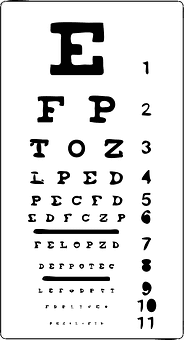
With our cutting edge diagnostic technology, Visionary Eye Center is offering a Digital Lifestyle Exam that’s perfect for all ages! With this revolutionary eye exam you can spend more time talking face to face with an optometrist on a plan for your eyes rather than staring through a machine.
With this eye exam you can expect:
You can check out everything it has to offer here!
Here, at the Visionary Eye Center, we strive for customized eye care solutions for our Reno-Sparks patients. As each patients’ needs are unique, our treatment should be as unique as you.
Our independence allows us the flexibility to use the latest technology, so you can receive cutting edge options and not bulk products that are found everywhere. Contact us today to get started with your personalized eye treatment today. We look forward to meeting you!
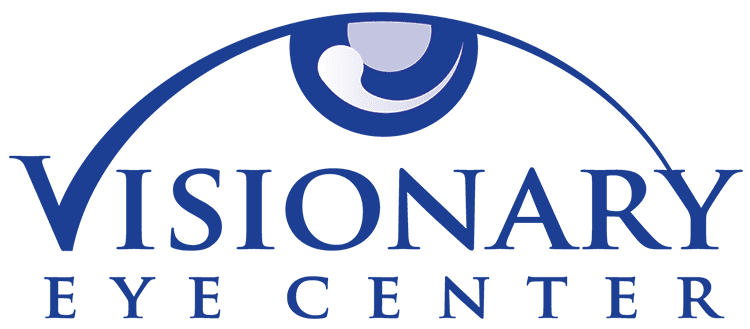 775.827.1100info@visionaryeyecenter.com8175 South Virginia Street Suite B-900
775.827.1100info@visionaryeyecenter.com8175 South Virginia Street Suite B-900